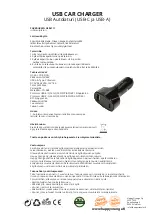
13-3
Consumer information and Reporting safety defects
–
CONTINUED
–
on straight-ahead braking traction tests, and
does not include acceleration, cornering, hy-
droplaning, or peak traction characteristics.
Temperature A, B, C
The temperature grades are A (the highest), B, and C,
representing the tire's resistance to the generation of
heat and its ability to dissipate heat when tested under
controlled conditions on a specified indoor laboratory
test wheel. Sustained high temperature can cause the
material of the tire to degenerate and reduce tire life,
and excessive temperature can lead to sudden tire
failure. The grade C corresponds to a level of perfor-
mance which all passenger car tires must meet under
the Federal Motor Vehicle Safety Standards No. 109.
Grades B and A represent higher levels of perfor-
mance on the laboratory test wheel than the minimum
required by law.
The temperature grade for this tire is estab-
lished for a tire that is properly inflated and not
overloaded. Excessive speed, underinflation,
or excessive loading, either separately or in
combination, can cause heat buildup and pos-
sible tire failure.
Summary of Contents for 2004 Forester
Page 3: ......
Page 15: ......
Page 27: ......
Page 164: ...3 35 Instruments and controls CONTINUED Horn To sound the horn push the horn pad HS3044BA ...
Page 165: ......
Page 167: ...4 2 Climate control Climate control Ventilator Air flow selection HS4008BA ...
Page 218: ...5 31 Audio CONTINUED HS5018BA ...
Page 219: ......
Page 228: ...6 9 Interior equipment CONTINUED pets Accessory power outlets HS6056BA ...
Page 241: ......
Page 278: ...7 37 Starting and operating CONTINUED body may not be adjusted to the proper position ...
Page 279: ......
Page 315: ......
Page 343: ......
Page 425: ......
Page 430: ...14 1 14 Index ...












































